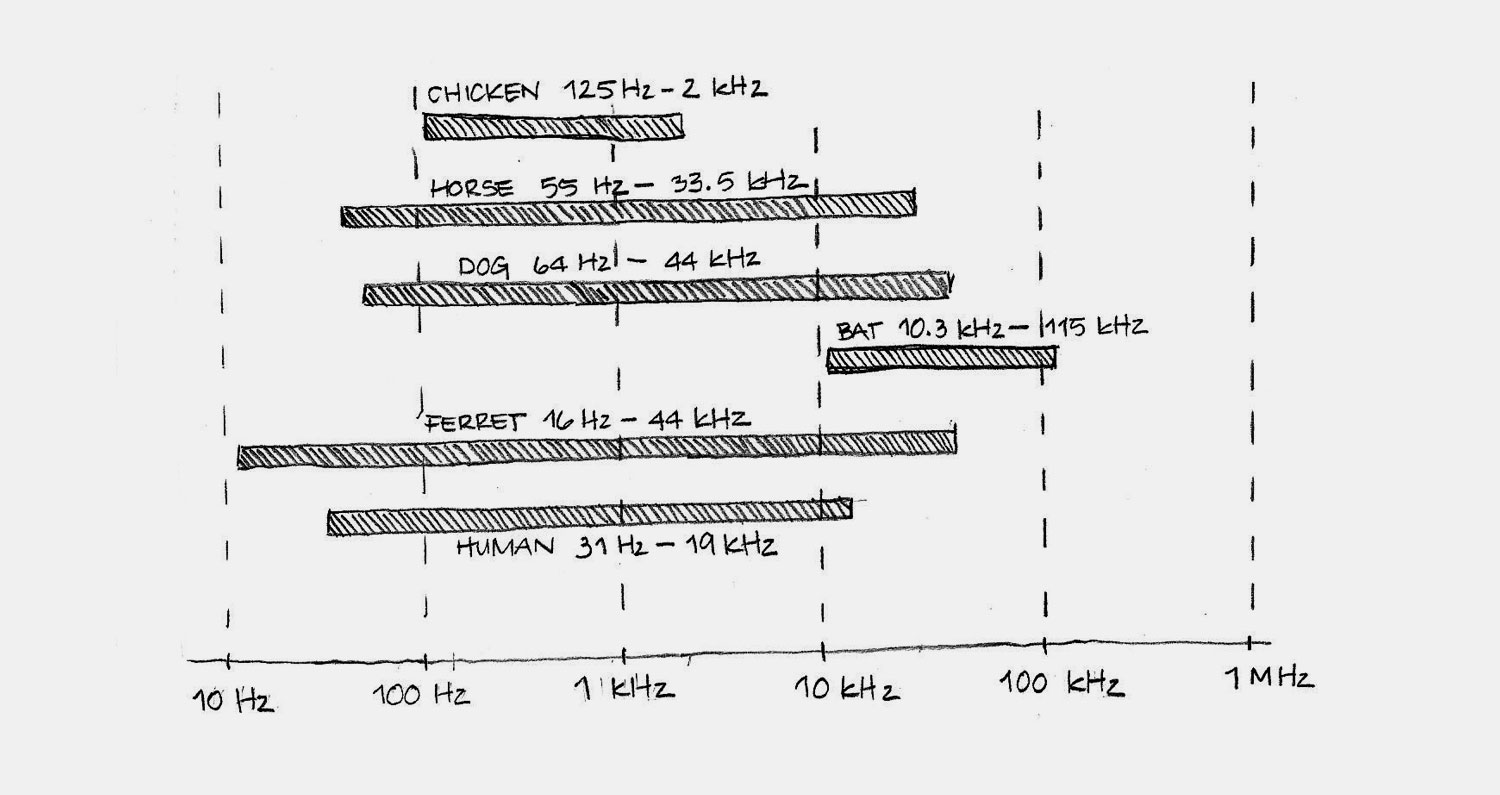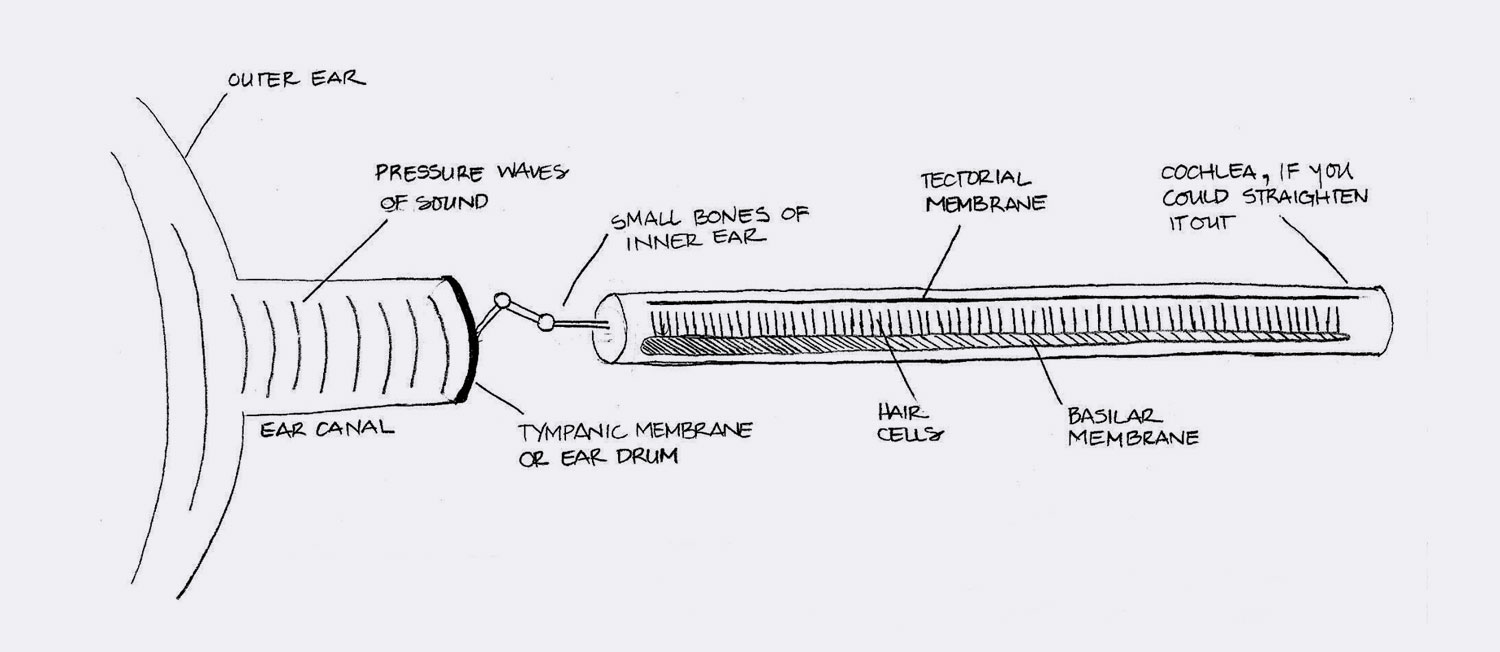The inexorable cacophony of motion
A first version of this article was first published in 2018 in the Radschläger, a quarterly magazine of the AIWCD.
One of the most telling signs of summer is the relentless symphony playing just beyond our doors. Between the birds blaring their territorial songs, insects buzzing every flower in sight and the incessant tact of commuters passing by, the world seemingly explodes in sound. Listen the next time you have a few minutes. There it is. The sounds of a world in motion.
In fact, I challenge you to find a single moment of silence. And I don’t mean tranquility or quiet. Gordon Hempton is an acoustic ecologist and one of few people with the patience and tenacity to travel the world looking for spots of quiet – places where no evidence of humans or our inventions can be heard. His project one square inch calls upon us to keep a specific square inch of the rainforest in Olympic National Park (Washington, USA) pristine and untouched by human interference, including sound. Imagine the vast radius of space that needs to be protected to prevent recording human sounds in that one square inch.
Hempton makes a profound statement about the ubiquity of human presence on this planet, but his square inch is far from silent. Hempton’s recordings there burst with sounds. For the closest thing to the absence of sound we have to go to the Microsoft Headquarters in Washington. Their anechoic chamber, a room that absorbs echoes, holds the Guinness World Record for the quietest place on Earth. The quietest moment recorded in that room was –20 dBA (that’s A-weighted decibels, a form of the decibel unit that is corrected for the fact that humans need louder sounds to hear low-pitched tones). To give you a frame of reference, decibels are on a logarithmic scale of measurement where 0 dB SPL (Sound Pressure Level – the uncorrected form of decibels) is about the weakest sound audible to the human ear, 60 dB is the level of a normal conversation, 120 dB is roughly the upper limit of our volume tolerance, and 140 dB causes ear damage. The difference between 0 dB and 120 dB is a factor of 1’000,000. If 0 dB is the weight of a butterfly, 120 dB is a pickup truck. Humans can capture an incredible range of sound intensities, but there are definitely sounds out there that we are not hearing.
Our physical world produces sounds constantly. Hearing is really just the way we perceive and interpret the movement of molecules; and at the temperatures we exist in, molecules are constantly moving. In his book The Dancing Wu Li Masters, Gary Zukav describes the material world – everything around us that consists of matter – as a soup of molecules at different densities. Weak and strong bonds hold molecules at these various densities. Put on imaginary molecular goggles and you would see that our bodies are a densely packed, highly organized conglomerate of complex molecules: DNA, fats, proteins, carbohydrates and such. A tree stump consists of similar molecules tightly packed and woven to form the fibers of wood. A rock is even more dense, its molecules forming lattices that are very difficult to penetrate. We walk through air, a broth of various small molecules that are comparatively far apart from one another. They move rather freely so you can easily cause ripples of motion through this molecular broth that propagate in space. Of course, these ripples dissipate over time and distance, but if they make it to our ears and are strong enough (loud enough) to move our ear drum, we perceive sound.
We are particularly good at perceiving sounds. While sight is our dominant sense, it is rather limited. Something we see has to be at least in our peripheral field of vision. Hearing, on the other hand, can pull us out of intense concentration, reflexively turning our head towards a sound to determine its origin. In fact, people who have suffered damage to the superficial part of the brain that processes auditory signals cannot hear sounds, but they still show reflexes to sounds because these are wired deeper in the brain.We also perceive a very rich range of sound pitches. It's true that dogs and cats can hear much higher pitched sounds than we can but look at the comparison of known hearing ranges for different animalsin the figure below. We do quite well. Pitch is a function of the frequency at which movement ripples propagate in our material world. When the ripples are close together – have high frequency – we perceive that as a high-pitched sound. The further apart the ripples, the lower the pitch.
These movement ripples cause our ear drum to vibrate at different frequencies. That vibration is then transmitted by miniscule bones inside our ear to a fluid inside the cochlea, a snail-like structure that transforms the vibration into nerve impulses that our brain interprets. If you could unwind the cochlea, you would have a straight tube of fluid with a membrane running along the entire length (figure 2). This membrane – the basilar membrane – is stiffer at the beginning of the tube and becomes softer towards the end. Like the tight strings of a guitar that produce high-pitched sounds, high-frequency vibration of the cochlear fluid makes the beginning of the basilar membrane vibrate. Lower frequency vibrations make the next section of the basilar membrane vibrate, and so on until the lowest frequencies we can hear, which move the very flexible end of the basilar membrane (think bass strings of the guitar).
Along the basilar membrane is a line of about 3500 hair cells; called that because they look like troll heads with long hairs that reach up toward an awning-like tissue extension: the tectorial membrane. When a section of the basilar membrane vibrates, the hair cells there get jammed repeatedly into the tectorial membrane and it is this rather brutal act that sends nerve impulses to the brain. The same map of frequencies can also be found in the brain. Specific sections of the brain become activated by specific frequencies, and combinations thereof give rise to complex auditory perceptions – songs, laughter, your own voice.
The mechanism of hearing is ingenious and one is prone to believe that the perception of silence is simply no activation of the hearing part of the brain. But that paints an incomplete picture of how we perceive. It isn’t that we are sensitive to sounds; we’re sensitive to changes in sound. In a material world that is constantly in motion (remember the soup?) it isn’t the movement that matters as much as when movement starts, stops or changes. You’ve experienced this: the white noise of the air conditioner eventually fades into oblivion; we can tune out the hum at a café and listen to a friend’s story. Mice studies have shown that the beginning of a sound will activate brain cells but if the sound continues, the cells stop firing.
The termination of sound is equally important. So much so, that an abrupt stop in sound activates a network of brain cells that is distinct to those that fire when the sound begins. Furthermore, our brain can resolve minute spans of silence as short as 4–5 milliseconds (2–3 milliseconds for those who practice) and uses these to recognize temporal patterns in sound. Consider, for example, the momentary pauses between words. Nearly imperceptible, the brain discriminates between sound and no sound to enable understanding speech, an ability that alas deteriorates with age.
And what about more extended pauses of silence? Not perceiving sound for long periods is eerie. Think of the muffled world after a good snow storm or the curious bewilderment when a crowd falls quiet. Abnormal reduction or complete cessation of sound are an indicator that something has changed in our environment – that movement patterns of the world's molecular soup have shifted and our brain expects and looks for a cause. In most cases, you can identify what has triggered the change. Alternatively, sound returns to restore an expected acoustic environment. But what happens when you find yourself in a very long period of absolute silence? People who have voluntarily sat in anechoic chambers for long periods of time describe becoming acutely aware of the sound of their heartbeat, the pulse of their arteries, the churning of their stomach. They might also hear a high-pitched hissing caused by the nerve between the ears and the brain spontaneously sending impulses without being triggered by sound. It is worth noting that not many people can stay very long in an anechoic chamber. Some have described auditory hallucinations, like machines humming in the room next door. Others become disoriented and even sick.
That’s not to say that everyone will react the same way to extended periods of silence. But these observations do suggest that our expectation is that the world is noisy. Not the loud and irritating noise of a highway or airport that is known to cause stress, but the varied, subtle and perpetual opus of molecules moving as we, other living things, rain, gravity and the rotation of our planet pound, push, pull and collide against them. The inexorable cacophony of motion.


